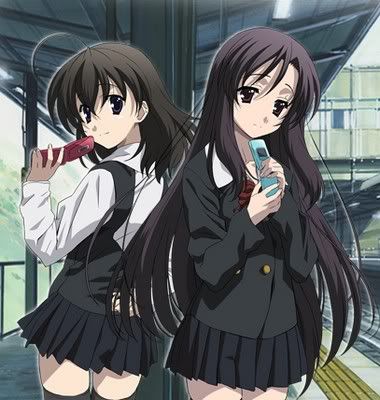

PUNK, 是兴起于1970年代的一种反摇滚的音乐力量。 PUNK在中国大陆译作"朋克"; 在台湾译作"庞克", 香港则叫作"崩"。 在西方, PUNK在字典是解(俚语)小流氓、废物、妓女、娈童、低劣的等意思 (虽然现在它的意思有了一定的改变)。 从最早由Leg McNeil於1975年创立《PUNK》杂志,之后由Sex Pistols将此音乐形成潮流距今已有25年历史了。要了解PUNK对世界及对室内空间的影响, 必先了解PUNK的意义及发展。 PUNK的精髓在于破坏,彻底的破坏与彻底的重建就是所谓真正的PUNK精神。
Punk起源
PUNK INTERIOR PUNK, 是兴起於1970年代的一种反摇滚的音乐力量。 PUNK在中国大陆译作"朋克"; 在台湾译作"庞克", 香港则叫作"崩"。 在西方, PUNK在字典是解(俚语)小流氓、废物、妓女、娈童、低劣的等意思 (虽然现在它的意思有了一定的改变)。 从最早由Leg McNeil於1975年创立《PUNK》杂志,之后由Sex Pistols将此音乐形成潮流距今已有25年历史了。 要了解PUNK对世界及对室内空间的影响, 必先了解PUNK的意义及发展。
1970年代的英国
PUNK这一词是被英国人叫唤起来的, 当时战后的英国, 经济萧条, 失业率高企, 而当时美国那边厢的荷里活电影发展得蓬勃刺热, 间接导致英国的电影业一落千丈; 在音乐事业方面, 英国亦是处於低迷状态, 美国正流行著progressive 诗篇式的摇滚乐, 十多分钟的solo, 音乐十分注重技巧化的表达, 而当年的掘摇滚乐逐渐商业化起来, 成为主流的地面商品, 那时候progressive rock 的表表者有YES, GENESIS, KING CRIMSON…。 其实自60年代起, 摇滚乐逐渐步入了一种可悲的境地, 为了商业利益, 乐队及乐手越来越缺乏摇滚乐所应具有的敏感性行(sensitive)及抗争性(complaint)。
势如破竹的"崩"力量
1975年Virgin 唱片公司所签下的label - "SEX PISTOLS"(大陆译名"性枪手")是PUNK的起点。他们发表的专辑"GOD SAVE THE QUEEN"的唱片封套大胆地把英女皇的嘴巴用"SEX PISTOLS"的封条封著。大胆的作风前无来者(及后新浪漫时期英国一队band -JAPAN亦曾在music video 内炸毁毛泽东的俏像), 他们完全的发泄心里一腔的愤恨, 无论对前途、社会都是一种控诉。 这就是PUNK的诞生。
一时之间, PUNK就势如破竹的成为一种狂潮, 因为PUNK是属於大众的文化, 可以极容易使人认同(基於当年英国社会问题), 人们得到宣泄的途径; 而香港当时的许冠杰一曲"半斤八两"亦是受PUNK的文化影响, 写尽打工仔的心态, 可见PUNK的世界性及兼容性(君不见"半斤八两"一碟卖得满堂红?)
三个和弦的音乐
PUNK是物资与欲望、理想与环境的不均衡压缩之下的变形产物, 对物质的敏感是PUNK的重要理念。他们让你感到一种暴躁不安的侵略性与攻击性, 以及对事事都不易满足, 所以PUNK的音乐大都涉及性、药物、暴力等。 "三和弦论"的PUNK是一种极民主的ROCK N' ROLL; 三和弦, 是指一苜歌只是用三个chord (和弦)组成, 完全没有修饰, 直接的、有力的、赤裸的表达他们想说的, PUNK亦没有长篇大论, 只有2-3分钟, 完完全全跟当年的主流相反。 因为PUNK的简单大众化, 使许多PUNK BAND在街头巷尾、车斗里、仓库里响起了他们第一个音符, 音乐已经再不是什麼高深的学问, 因为PUNK有极强的可参与性, 使得PUNK音乐得以普及, 对摇滚乐有著积极的推动作用。
PUNK的演变
尽管PUNK是那麼的负面, 那麼的极端, 但它总算在世界艺术史上写下重要的一页。PUNK的出现, 不只於在音乐世界, 还影响了时装、平面图像、视像及室内装潢。一名作家Malcolm Mclarer说过"If punk was just about music this thing would have died years ago" "punk is the most important event in post-war Britain." PUNK亦可能给予意义含糊的新浪漫(POST- MODERNISM )一点栓译。 PUNK的演变之广, 我们可能没有擦觉, 它已经变身成一种行为艺术, 一种思想, 甚至一种人生。 在平面设计方面, 由SEX PISTOLS的唱片封面引发起一种"并贴"的热潮, 当年的海报, 杂志等都以这种方式排版, 对往后的设计业影响钜大。 在时装设计方面, 大家一向可能误解那些PUNK头的人是PUNK友, 那是十分错! 其实PUNK的潮流, 在八十年代的青年人一定经历过, 当年梅艳芳的一身打扮都是受PUNK LOOK影响, 人们还以为梅小姐带领潮流, 其实她也是跟潮流! PUNK LOOK 往往是一种反叛型态, 80年代的男生gel起头发, 一条窄身牛裤, 加上一件不扣钮的白恤衫, 再戴上一个headphone连著腰间的walkman, 已经是一种PUNK LOOK。(可惜香港人只是学齐了人家的outlook,, 但headphone却听著中文流行曲!!)
"崩"空间
我们认识了PUNK的意义名历史后, 已经对它有了一定程度的了解, PUNK的意义随了前文所讲的, 还进入了室内空间。 PUNK随了反叛、不满之外, 它还创造了一种简洁而有力的艺术定义。 PUNK的三个和弦走天涯, 对室内设计者而然是一种启发。 "简洁""有力", 在玩代的设计行业里听得不少, 但有没有想过这就是PUNK的理念? 以音乐来解释, PUNK是没有"装饰音", 只是用了三个major chord (大调)而奏成, 没有高深的技艺, 将这些原理套入室内空间入面, 就是简洁地用点线面等原始的元素构成一个空间, 就像"LOFT"这种空内设计的模式, 都是PUNK的副产品; 比较战前至60年代的 ART DECO 甚至 ART & CRAFT时期的空内空间, 它们都充满修饰, 例如雕花的桌椅, 华丽的吊灯, 精美细致的地毯等, 这就像60年代那些PROGRESSIVE 诗篇摇滚乐, 充满装饰的音节, 用上成千上万的和弦, 十分注重技巧(skill)的表达。 这麼的比较是否十分清淅?
PUNK的室内设计, 主要用最简单的form(形状), 如圆柱, 长方等原始的形状构成, 而用色都不会很多, 简单就是力量, 就是因为这样, PUNK INTERIOR就是不易使人擦觉, 因为它没有强烈的设计元素, 人们常常以"简洁"一词充当挡箭牌, 但没有想过, "简洁"都美术史的其中一员, 更没有人想过, PUNK便是"简洁"的源头。 现代生活之中, 我们身边有很多以PUNK作为设计原素的品牌, 就如IKEA, 无印良品等等都是活生生的例子, 我们平日多留意身边的事物, 便会找到更多PUNK的足迹, 因为我们根本就是活在PUNK的时代。































































